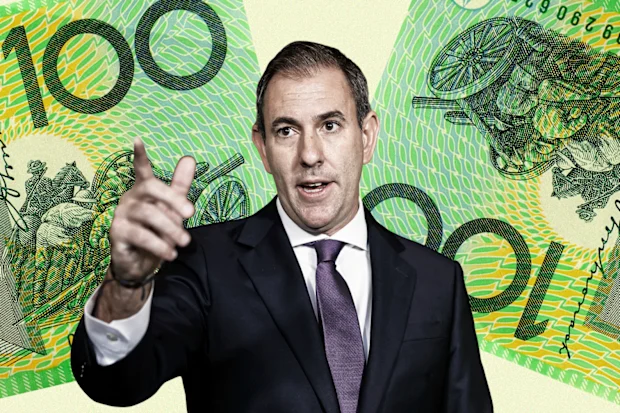Earnings on super balances over $3 million will be taxed at 30%, double the current 15% rate. Starting July 2025, this significant change is coming to Australia’s superannuation landscape.
At first glance, this may seem like a niche policy affecting only a handful of high-net-worth individuals. But for property investors, especially those using SMSFs to hold properties, this tax change could fundamentally reshape property investment strategies.
In this blog, let’s unpack what the tax is, why it matters, and how property investors may need to adapt.
What is the $3M super tax?

Under the new policy, any earnings on the portion of a superannuation balance that exceeds $3 million will be taxed at 30%, up from the current concessional 15%. This includes both realised and unrealised gains, which is a controversial element of the reform.
What are realised and unrealised gains?
- Realised gain: the profit realised when an asset is sold for a higher price than its purchase price.
- Unrealised gain: the potential profit on an asset if it were sold, but it hasn’t been. In other words, the gain is only “on paper”.
The tax kicks in on 1 July 2025, and importantly, the $3 million cap is NOT indexed to inflation. That means over time, more Australians may find themselves caught by the threshold, even if their purchasing power hasn’t meaningfully changed.
According to Treasury estimates, about 80,000 people will be affected initially. But with compounding returns and rising asset values, particularly in property, this number will only grow.
How would this tax affect property investors?
Property is a common asset class in self-managed super funds (SMSFs), especially among sophisticated investors with larger balances. Residential and commercial properties are often used to generate rental income and long-term capital gains, while also offering a degree of control and tangibility that traditional super funds don’t.
Here’s where the new tax raises flags: Unrealised gains on property values will be taxed, meaning that investors may owe tax just as their properties grow in value, without selling any of them and receiving any actual profit.
So while many investors might not have hit the $3 million cap yet, those who are close, or whose portfolios include fast-growing properties, could “creep over” the threshold sooner than anticipated.
How strategies might shift
With these dynamics in play, we expect to see a number of strategic responses from property investors looking to future-proof their superannuation plans. In fact, many high-income earners and wealthy retirees are already taking action.
- Portfolio Rebalancing
Investors are starting, or may soon start, reallocating property out of super and into other structures, such as family trusts or company entities, particularly if they’re anticipating significant capital growth that could trigger large unrealised gains.
Some may opt to limit further property acquisitions within SMSFs and favour higher-liquidity & lower-volatility assets that are easier to value and manage for tax purposes.
- SMSF Structuring
Larger balances may now be spread across multi-member SMSFs, especially among family members, to slow the approach towards the $3 million limit per fund.
This could lead to an uptick in strategic SMSF planning where super balances are split or carefully rebalanced to delay the onset of the higher tax tier.
- Tax Planning and Legal Structuring
More investors are seeking advice from accountants and lawyers to assess how assets are held, transferred, or sold. Structures like discretionary trusts and corporate vehicles may offer more flexibility and separation from the superannuation environment.
However, one thing worth noticing is that the above shifts will likely have very limited impact on the overall market demand and supply dynamics due to their relatively small scale:
- The majority of property buyers do not use SMSFs to buy properties. As of Q1 2025, around 16% of property buyers are non-foreign investors (who can possibly use SMSF to invest). Of those, only one in five (estimated based on an InvestorKit-Agile Market Intelligence survey) use SMSFs for property purchases. That equates to less than 5% of all property buyers.
- Among the investors who utilise SMSFs, only a tiny fraction have super balances close to or above $3 million, meaning that any “panic sales” or other reactive behaviour are confined to a small segment of the market.
Recommendations for property investors

This isn’t a reason to panic, but it is a reason to plan. Whether your super balance is $1 million or $5 million, you should be reviewing your strategy in light of this policy shift.
Here are some next steps to consider:
- Review your current super balance and forecast your projected growth rate. Will you likely exceed $3 million in the next 5–10 years?
- Evaluate your SMSF portfolio for liquidity. Would you have the cash flow to cover taxes on unrealised gains?
- Speak to your accountant or adviser about whether certain property assets should remain in super or be moved to alternative structures.
- Stress test your tax exposure under different valuation scenarios, particularly for illiquid assets like real estate.
A Moment to Rethink, Not Retreat
While the new tax affects a relatively small number of people today, its design reveals a larger shift in the government’s approach to wealth accumulation through superannuation. It prioritises equity and budget sustainability over universal tax concessions, and it signals a more active policy stance on high-balance super funds moving forward.
For property investors, this is a moment to rethink, not retreat. The property-superannuation intersection is still powerful, but the rules of the game are changing. Being prepared and informed will be the key to continuing to invest with confidence, clarity, and control.
InvestorKit is a buyer’s agency dedicated to helping Australians achieve their financial goals through property investing, either in the traditional way or with an SMSF. Thanks to the knowledgeable Portfolio Strategist team, our purchases are not just data-driven, but also highly strategy-oriented. Wondering whether it’s still the best strategy to invest with an SMSF, or how you should restructure your SMSF portfolio in light of this policy shift? Book your 15-minute FREE discovery call today!
.svg)
